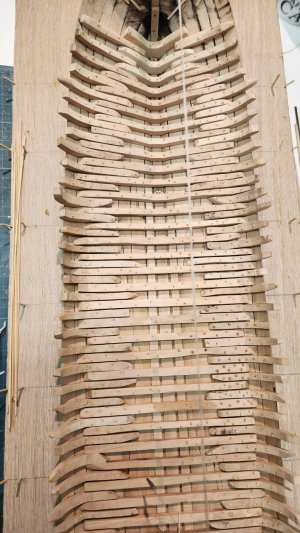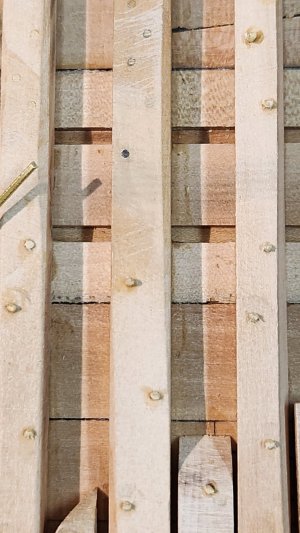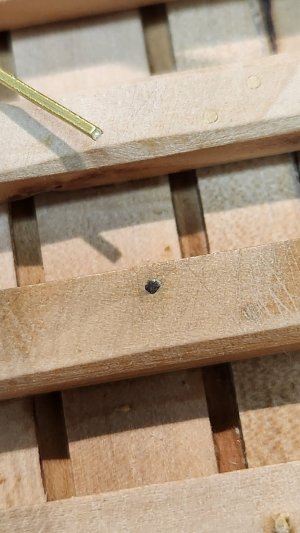Finally the last liggers and zitters are fitted in the shell.
View attachment 470947
View attachment 470948
As they said in Dutch "ze is volgezet met hout" or she is filled with timbers. See below an overview of the filled shell.
These were the last timbers before the scheerstrook is setup which determines the shape of the upper part of the hull.
View attachment 470949View attachment 470950View attachment 470951View attachment 470952View attachment 470953View attachment 470954View attachment 470955
But before we get to the scheerstrook which is one of the most interesting parts of the build we first have the tedious task of fixing all the timbers with tree nails. In the real build this was done after fitting each timber as the timbers replace the temporary clamps which held the planks together. I have done that with pva glue but also add the tree nails.
Three nails were fitted in several stages. First treenails were fitted to connect the outer planks to the timbers so the clamps could be removed to fit the next timber, these are the treenails I fit now, a limited number of only 1 per plank/timber. After the ceiling was fitted a second time treenails were fitted through the ceiling planks and again through the timbers and outer planking. The is a nice paper about this from Thijs Maarleveld from which below pictures come.
View attachment 470969
View attachment 470970
The treenails I make from boxwood using a table saw and a drawplate.
The tree nail is a wooden pin fitted through the wood and pegged on both sides with a wooden pin expanding the treenail and fixing it.
See below the treenail on the anchor in my garden.
View attachment 470956
View attachment 470957
How thick is this treenail?
View attachment 470958
Exactly 1 thumb (INCH)
To scale in my hull 1 Amsterdam thumb is 0,7 mm. In wrecks I have seen small differences in size of treenails used, even in the same wreck.
For my hull I have decided to make treenails of 0.85 mm which is 1 1/4 Amsterdam thumb.
As mentioned I saw them from boxwood.
View attachment 470959
First small 1mm square and pulling them through a Jim Byrnes drawplate to get a 0.85 mm round treenail.
View attachment 470960
Now drilling one hole per timber plank connection and fitting nails.
View attachment 470964
View attachment 470967
The nails go all the way thrue and will be trimmed afterwards.
View attachment 470963
View attachment 470965
Still plenty to go.
View attachment 470966







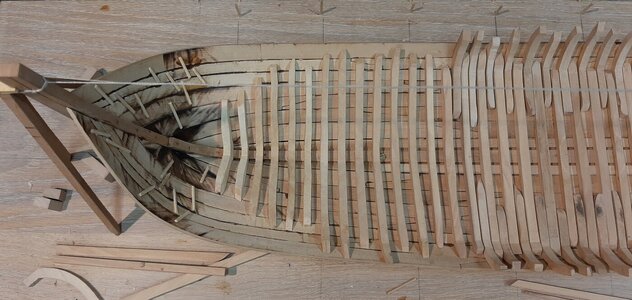
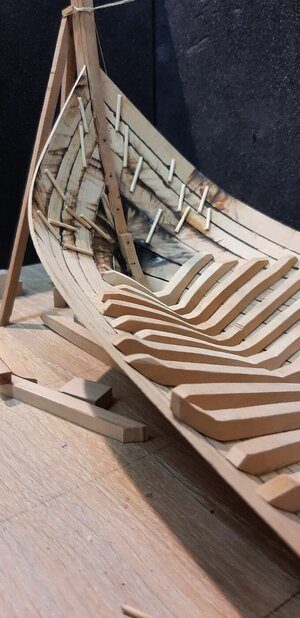
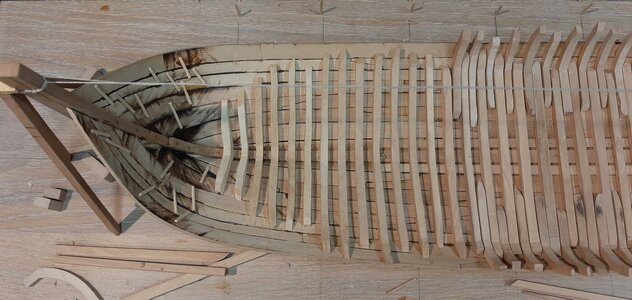
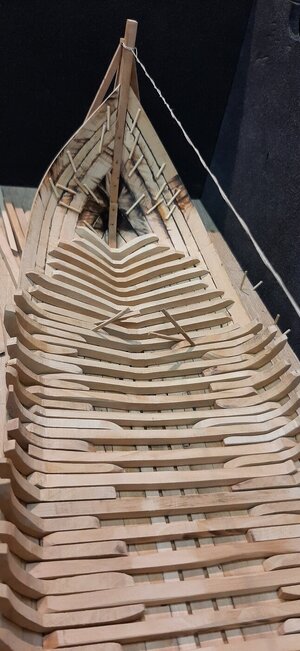

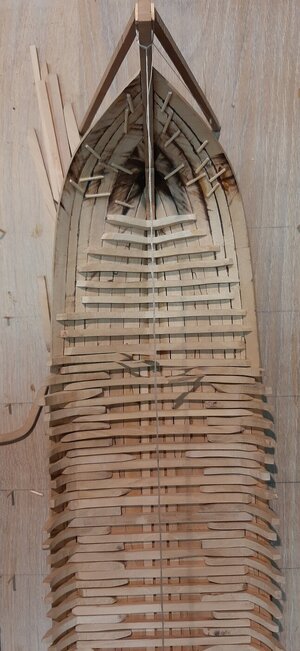


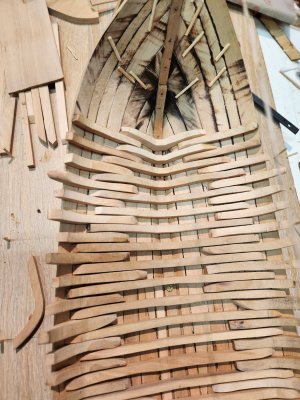
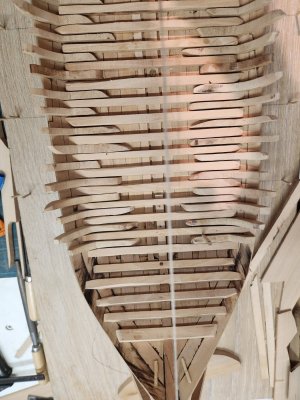
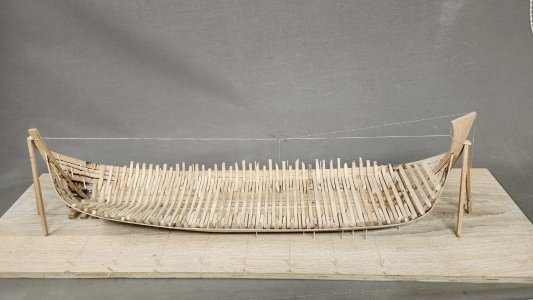
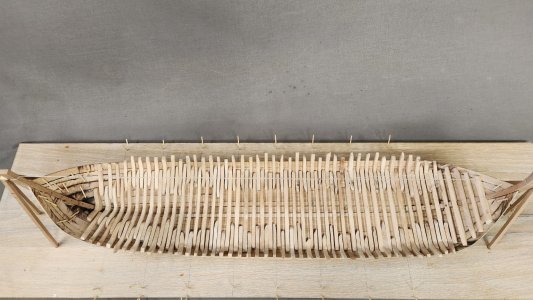
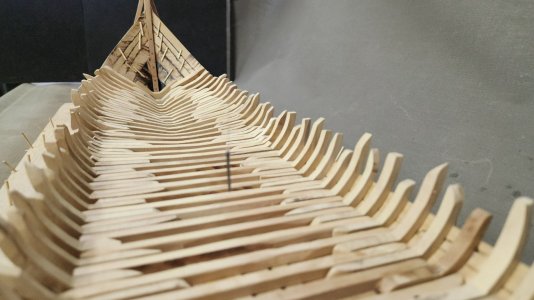
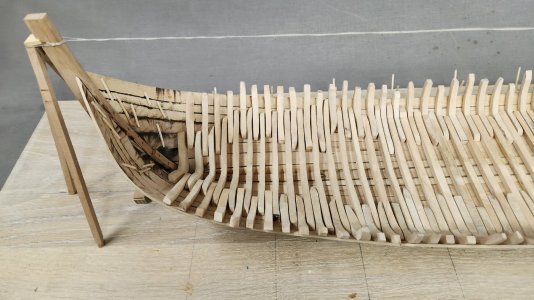
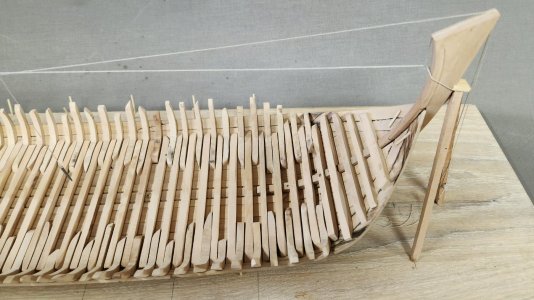
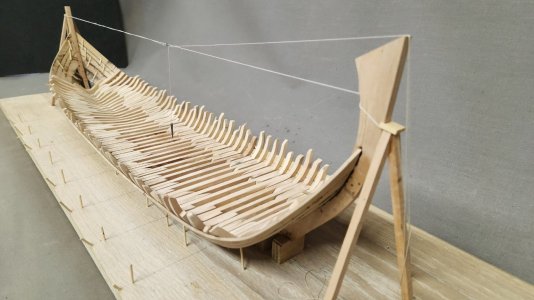
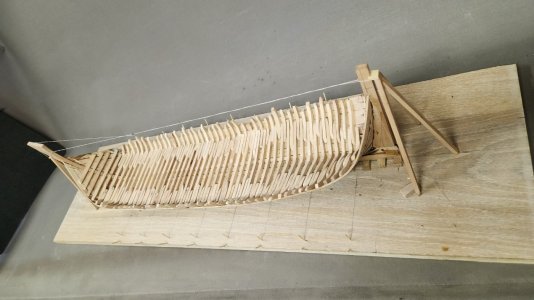
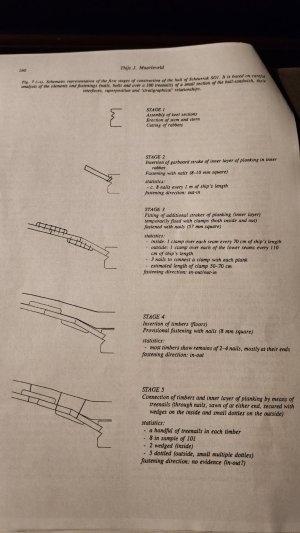
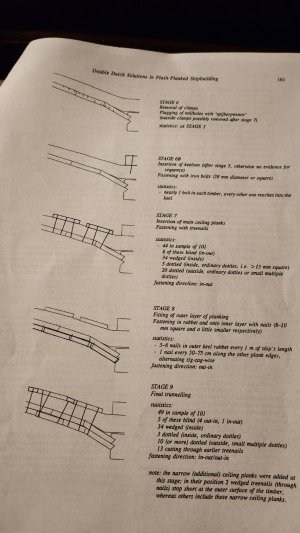
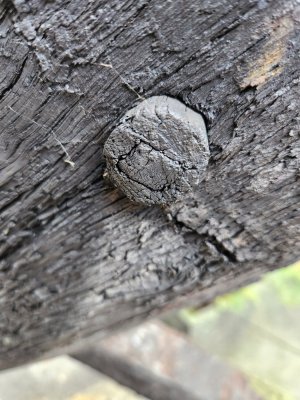
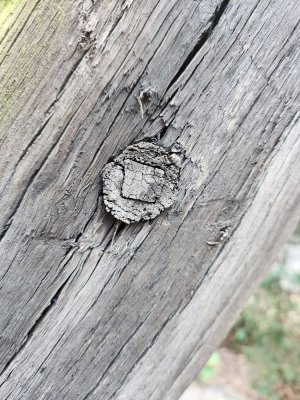
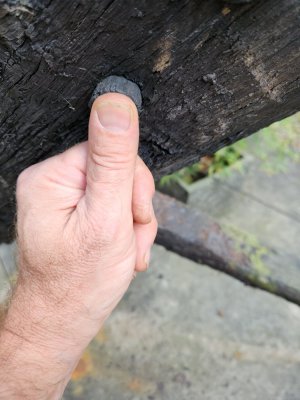

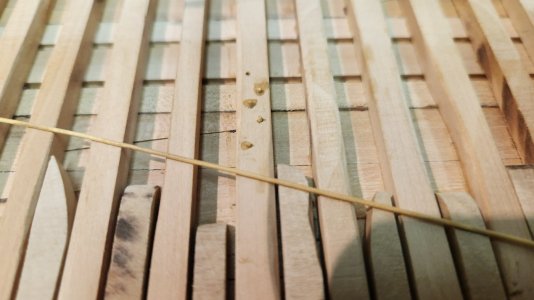
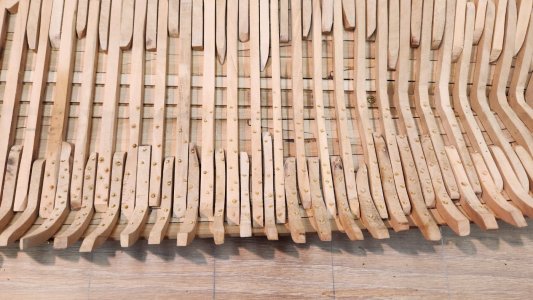
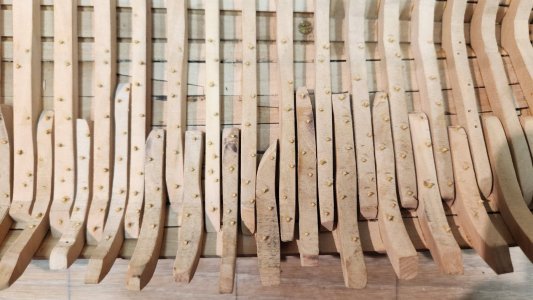
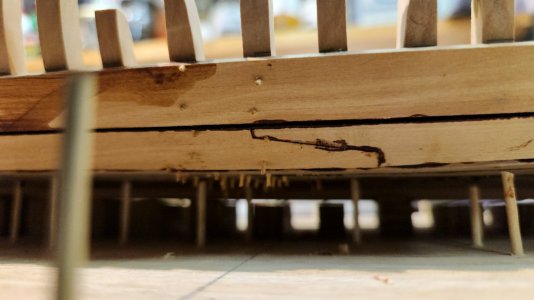
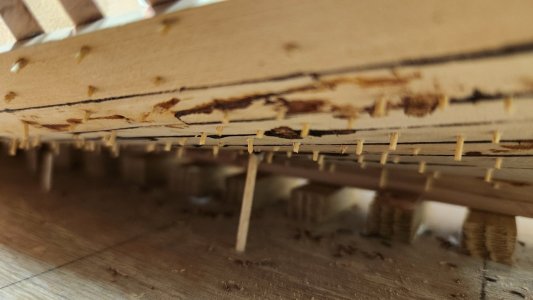
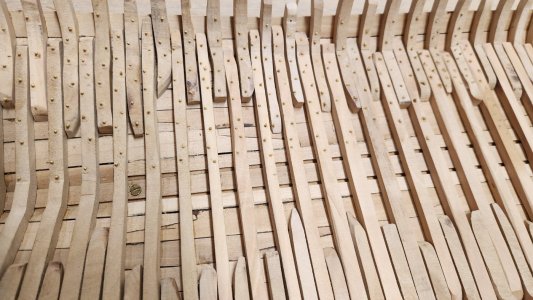
 .
.
